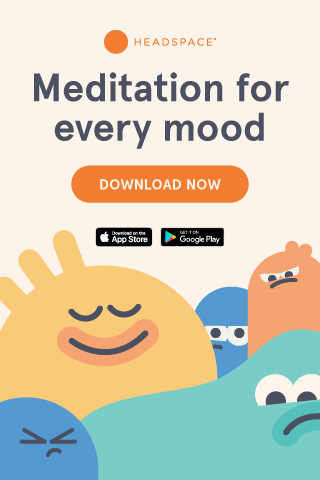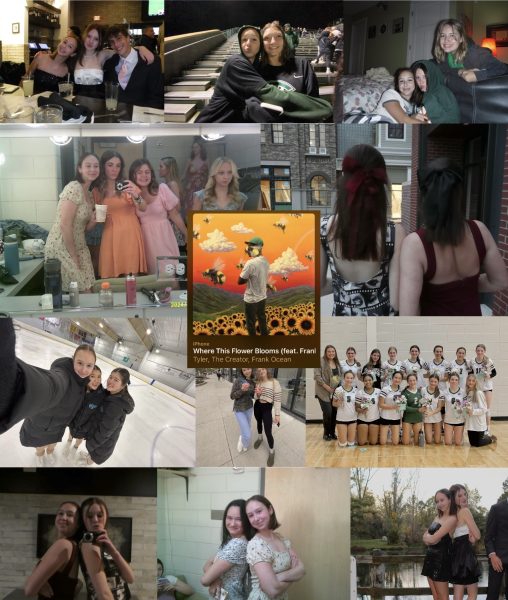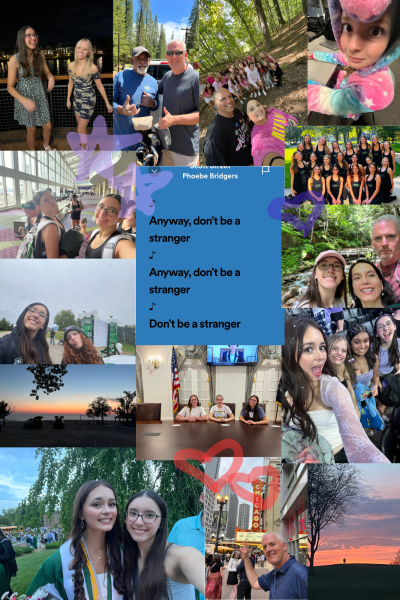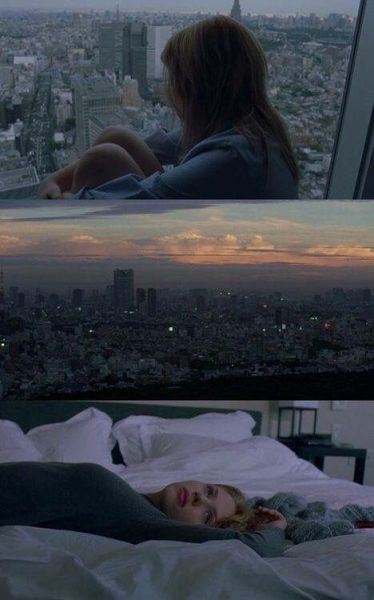Meditation apps are your new at home therapy

My personal favorite guided meditation app a poster for Headspace
The term “depression” was first used in the 1930s, under the umbrella term mental health. Since then, many other facets of mental health issues have been identified, diagnosed, and helped.
A common outlet for mental health relief is therapy. However, within the last year, the demand for therapists and counselors has nearly doubled, and their waitlists have steadily increased with the stress of the pandemic.
This unfortunate lack of available resources has led people to seek out other forms of comfort and help. In this new day of technology, it’s no surprise that people want to see what apps are available to fill the therapist void.
When you type the words “mental health” into the Apple App Store, an array of journaling programs, mood trackers, and meditation apps dance across the screen reassuring you that if you choose to download their particular curriculum, all your problems will dissolve before your eyes.
Knowing full well this claim was too good to be true, I decided to investigate anyway. Focusing on meditation apps, I downloaded Calm, Headspace, and Breathwrk. I attempted to use each of them interchangeably for a week to see which ones, if any, were actually worth my time.
In this new day of technology, it’s no surprise that people want to see what apps are available to fill the therapist void
My first impression of all three apps was relatively similar: they all had me fill out a short survey to target my intentions with their app. I was prompted with several options like sleep, anxiety, a healthier lifestyle, etc.
Beyond this point, I was struck with disappointment when each app wanted me to pay a monthly fee in order to gain access to the majority of content, such as guided meditations, progress trackers, and even workouts to target stress relief. If you are willing to pay for a monthly subscription, Calm and Breathwrk cost about five dollars a month, while Headspace charges are closer to 13.
However, like most people, I wasn’t looking to spend any money, so I searched for free features that were offered without any sort of subscription. After a lot of clicking around on all three apps, I found that Headspace had the most free content in the form of guided meditation videos, along with some articles and other activities.
Unfortunately, the Calm and Breathwrk didn’t have enough, or really any extra, content that I could access without paying, so keeping them on my phone was sadly pointless. They did, however, have free trials, if you’re interested in just testing out full access for a few days.
My favorite meditation program that I did on Headspace was “Basic Meditation.” It allows you to adjust the timer for anywhere from three to ten minutes, and as someone that doesn’t consistently meditate, I found it to be the least overwhelming and user-friendly app while still being effective.
Another great Headspace option is the two Headspace tv shows on Netflix: Guide to Sleep, and Guide to Meditation. Both shows are one season long with seven to eight episodes that are 20 minutes. I personally prefer the Guide to Sleep, but both are viable resources.
Hopefully, the demand for therapists will be answered by actual professionals; however, there are some great options of apps out there to target specific mental health issues you might have, or at least ease your mind.

Allie Beaumont is a Senior on The Central Trend. She is entering her fourth and final year on staff and could not be more excited. This year she received...






























































































